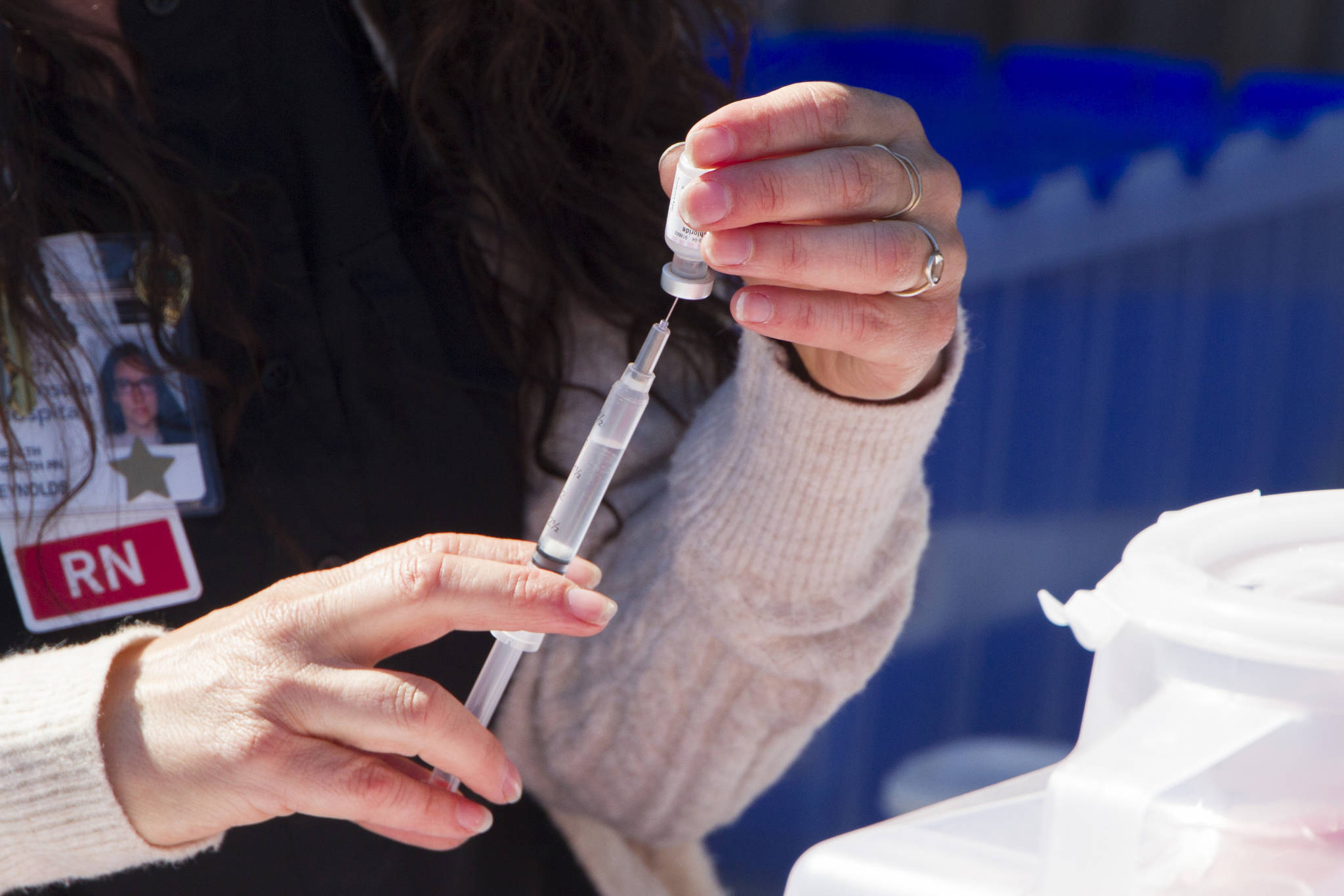Tracking vaccination rates at the community level presents challenges to Alaska public health officials. For example, providers don’t use standardized forms. Patients will use mailing addresses and not residential addresses. That can lead to disparities in information, like an initial 3% vaccination rate for Fritz Creek that led officials to rethink their analysis.
“This is so new for us,” said Rosa Avila, a public health scientist with the Alaska Department of Health and Social Services in a conference call last Thursday. “Sometimes we find out issues with the data and have to go back and add cases.”
DHSS had been showing single-dose and fully vaccinated rates at the borough or large municipality level, but only last month began sorting out that information at the community level. On Table 7 of its Summary Data Tables on the COVID-19 data hub, the table shows vaccination rates for Census Designated Places of 1,000 people or more. For the southern Kenai Peninsula, that includes Anchor Point and a region called “Homer area” made up of the City of Homer, Diamond Ridge and Fritz Creek.
The information does not include Census Designated Places of fewer than 1,000 people like Kachemak City or Ninilchik. Data managers are working on calculating vaccination rates as a whole for those areas, identified as “Kenai Peninsula other-south” and “Kenai Peninsula other-north,” the same system used to report positive COVID-19 cases for smaller communities.
As of June 30, the number of people who have received at least one dose for the Homer area, population 9,114, is 5,545 or 60.8%. For those fully vaccinated, the number is 5,189 or 56.9%. In the Anchor Point Census Designated Place, 39.47% have received one dose and 36.9% have received two doses. In the Kenai and Nikiski area, 39.1% have received one dose and 36.3% have received two doses. In the Seward area, 47% have received one dose and 44.2% have received two doses. In the Sterling CDP, 18.8% have received one dose and 17.6% have received two doses.
The borough vaccination rates are based on a percentage of the population ages 12 and older — those age groups approved to receive the COVID-19 vaccine. The community vaccination rates are based on a percentage of the total population, and thus the percentage would be less than if it applied to the vaccine eligible group. The total population number is based on 2020 estimates while the age 12 and older number is based on 2019 estimates.
Sorting out actual residency from mailing addresses presents the biggest challenge. Avila said most people put down their mailing addresses and not their physical address. Officials noticed that in areas like Homer where people might live in one area but get their mail in another area, some communities might have lower numbers. That’s what happened in Fritz Creek. A similar issue shows up for Prudhoe Bay. Another challenge is that providers use different forms.
“That’s part of the issue,” said Morgan Frank, a DHSS health program manager. “There is no standardized method.”
Frank said that for reporting positive cases of COVID-19, contact tracing gets a more accurate accounting of residency. To encourage vaccination, providers also aren’t required to ask for an identification card, so residency for some vaccine recipients is not known at all. Computer programs sorting out residency were able to look at ZIP code and then physical address, which is how some vaccine recipients in Fritz Creek got counted.
DHSS has been tracking residency by Census Designated Place, or CDP. Some CDPs share the same ZIP code, like the city of Homer and Diamond Ridge. Other CDPs have two ZIP codes and share them with other CDPs.
“It can get pretty tricky,” Avila said.
Vaccine providers do get contact information like phone numbers.
“The point is to get in touch if something goes wrong,” Frank said.
Public health officials use vaccination rates to calculate what’s called herd immunity, a point where so many people have gotten vaccinated that the spread of a disease slows down or stops. DHSS doesn’t use the number of positive cases as part of its calculation of herd immunity, Frank said.
“Infection can lead to varying levels of immunity,” she said. “Some were known to be positive but had no protection.”
The data team also doesn’t have information on people who tested positive who also got vaccinated. They do track positive cases of COVID-19, called “breakthrough” cases, in people who got vaccinated.
Avila emphasized that reporting vaccination rates will continue to be refined, with data quality activities constantly going on.
“They’re so many small areas all over Alaska to track and follow,” she said.
Efforts to get more Alaskans vaccinated will continue. As the start of the school approaches next month, DHSS will emphasize efforts like getting more eligible school-aged athletes vaccinated and more faculty vaccinated, said Stephanie Holmquist, a public health specialist and coordinator of the Sleeves Up for Summer campaign.
For statewide and borough vaccination rates, as of Wednesday, 307,572 Alaskans age 12 and older are fully vaccinated, with 337,681 having received at least one dose.
As percentages, 51% of Alaskans age 12 and older were fully vaccinated against COVID-19, while 56% had received at least one dose, according to information from DHSS.
The Kenai Peninsula Borough has reached 46%, or 22,839 people, have received at least one dose.
Reach Michael Armstrong at marmstrong@homernews.com.

